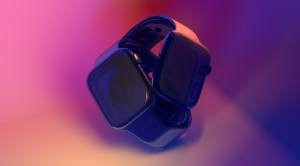The Future of Accessibility: Exploring Wearable Tech for Disabled Communities
In today’s fast-paced technological landscape, wearable tech stands out as a beacon of hope and empowerment for individuals with disabilities. As these innovative devices become more accessible and user-friendly, they are transforming the lives of many by enhancing independence and improving quality of life. Let’s delve into how wearable technology is making strides in accessibility for disabled communities.
Understanding Wearable Technology
Wearable technology refers to electronic devices that can be comfortably worn on the body, often incorporating sensors and software applications. These gadgets range from smartwatches to health-monitoring bands, fitness trackers, and even smart clothing. Their primary function is to collect data about the user’s health or environment, providing real-time feedback that can be crucial for individuals managing various disabilities.

Enhancing Communication
For many individuals with hearing or speech impairments, communication can be a significant barrier. Wearable tech like speech-generating devices (SGDs) or augmented communication apps integrated into smartwatches allow users to express themselves more easily in social settings. These technologies use voice recognition and text-to-speech capabilities to empower users in conversations, promoting inclusivity and participation in daily activities.
Improving Mobility
Mobility challenges are common among individuals with physical disabilities. Wearables such as exoskeletons or smart orthopedic devices provide support that enhances movement capabilities. These advanced tools are designed to assist users in walking or performing daily tasks independently while also monitoring vital signs and movements to ensure safety during their activities.
Managing Health Conditions
Many people living with disabilities have underlying health conditions that require constant management. Wearable technology plays a critical role here by allowing continuous monitoring of vital signs like heart rate, blood glucose levels, or oxygen saturation through smartwatches or fitness trackers. This data not only helps users maintain their health but also provides caregivers with essential information about their loved ones’ well-being.
Fostering Social Connections
Isolation can often be a challenge for those with disabilities. Wearable technology helps bridge this gap by enabling easier social interaction through features like notifications for messages from friends and family on smartwatches or access to social media platforms via accessible interfaces. By facilitating connections with others, wearable tech contributes significantly to emotional well-being among disabled individuals.
As we look toward the future, it’s clear that wearable technology holds immense potential for creating a more inclusive world where accessibility is at the forefront of innovation. By empowering people with disabilities through enhanced communication tools, mobility aids, health monitoring systems, and social connectivity features, we are one step closer to breaking down barriers faced by disabled communities.
This text was generated using a large language model, and select text has been reviewed and moderated for purposes such as readability.


